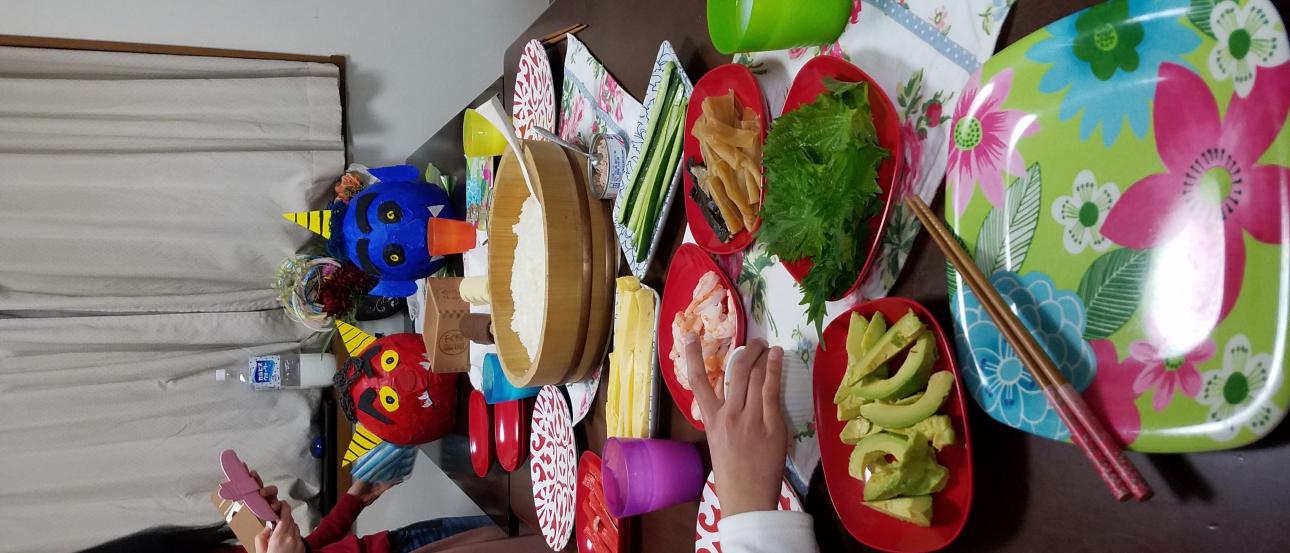In the United States the coming of spring is celebrated most famously on Groundhog Day, the second day of February. On this day, Punxsutawney Phil, a groundhog that lives in Punxutawney, Pennsylvania, is brought out during a festival filled with music and food to predict the end of winter. According to legend, if Phil sees his shadow and returns to his hole, he's predicted six more weeks of winter (or winter-like weather, to be more precise). If Phil does not see his shadow, spring will come early.
Groundhog Day, despite its serious Celtic and Germanic roots, has evolved into a fun and light-hearted tradition. The Japanese festival of Setsubun is remarkably similar.
Setsubun takes place on the third day of February, the day before the beginning of spring in Japan. Associated with the Lunar New Year, Setsubun historically was a special ritual to cleanse the evil from the previous year and prevent spirits from tainting the upcoming year. In this ritual, mamenaki, roasted soybeans better known as "fortune beans" are thrown out the door or at a family member wearing an Oni mask while chanting, "Demons get out! Luck come in!" After this symbolic cleansing, it's customary to eat a roasted soybean for each year of one's life. I think it tastes like burnt popcorn.
In the Kansai region’s celebration of Setsubun, it is traditional to eat makizushi (a long, uncut sushi roll, almost like a burrito) while facing lucky compass direction for that year, meditating on goals and wishes for the upcoming year in silence. This roll is called ehō-maki, or lucky direction roll. This year, the direction was north-northwest, and eating the entire thing in one sitting was quite the challenge. I had the opportunity to celebrate Setsubun in a couple of different ways.
Earlier this year, I helped my host sister, Yuka, make paper mache oni masks, and I finally got to see the reason why! I came home to my host family’s home on Setsubun to find Yuka and her friends already starting on a delicious sushi meal. It was heartening to see Yuka and her teams don our loving crafted masks, put to good use as they armed themselves with bags of mameyaki before proceeding to pelt whoever was wearing the oni mask as hard as possible. I was a little surprised when the glued on facial features and horns began to fall off, and I was worried about the fragile furniture, but I still joined in by gently throwing some of my own beans at the stumbling oni. Many of the beans had been cracked from the force and amount of times they had been thrown, but we all agreed we had a great time when we finally sat down to eat the remaining beans.
Setsubun is traditionally celebrated in the home to cleanse it, but shrines and temples usually host their own celebrations too. It’s like another matsuri, with the typical food stalls like taiyaki and candied fruit present, but the main attraction is the bean throwing. While priests typically throw the beans, and sometimes other goodies like blessed artifacts and mocha, some people are willing to pay 3,000 yen to don a festival jacket and throw beans at the crowd. (For an extra 1,000 yen, you can even keep the special wooden box the beans come in!) People will stand with open bags of all shapes and sizes and try to catch as many beans as possible, which they will then take home and eat for luck.
Maybe next time I’m in Japan for Setsubun, I might splurge for that privilege.


Naomi Wolfe
<p>My name is Naomi Wolfe and I am a Japanese major and Sociology minor studying in Japan for the 2016-2017 academic year in the hopes of understanding Japanese culture, people, and society. I studied in the Tokyo Language & Culture Program for the fall semester and cannot wait to see what else I can learn in the Nagoya Direct Enrollment Program in the spring semester!</p>









